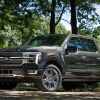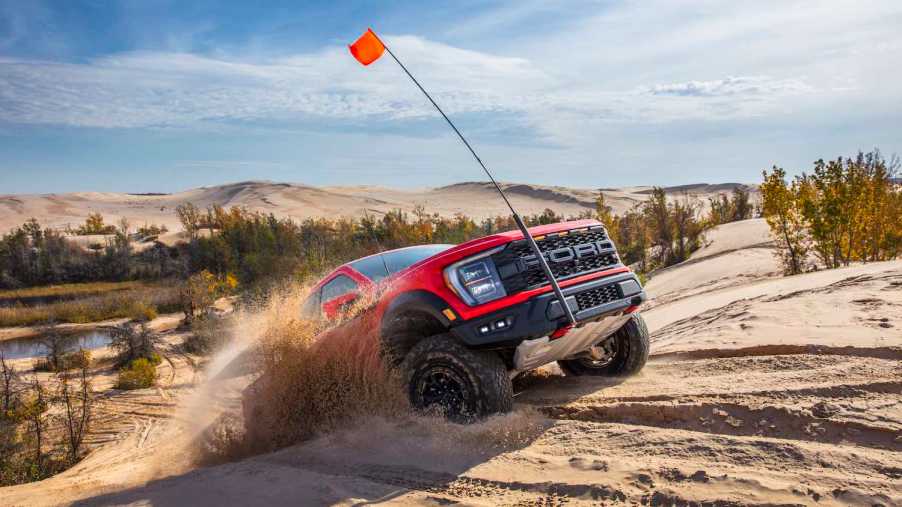
Ford’s F-150 Raptor and the Misleading Rise of Full-Time 4WD
The lines between AWD and “Full-Time 4WD” are blurry. But it didn’t have to be this way. The industry has had multiple chances to define the two technologies separately, and one generation of the Ford F-150 Raptor truck even had both AWD and 4WD settings. Read on to find out how it all works.
The difference between 4WD and AWD isn’t so simple
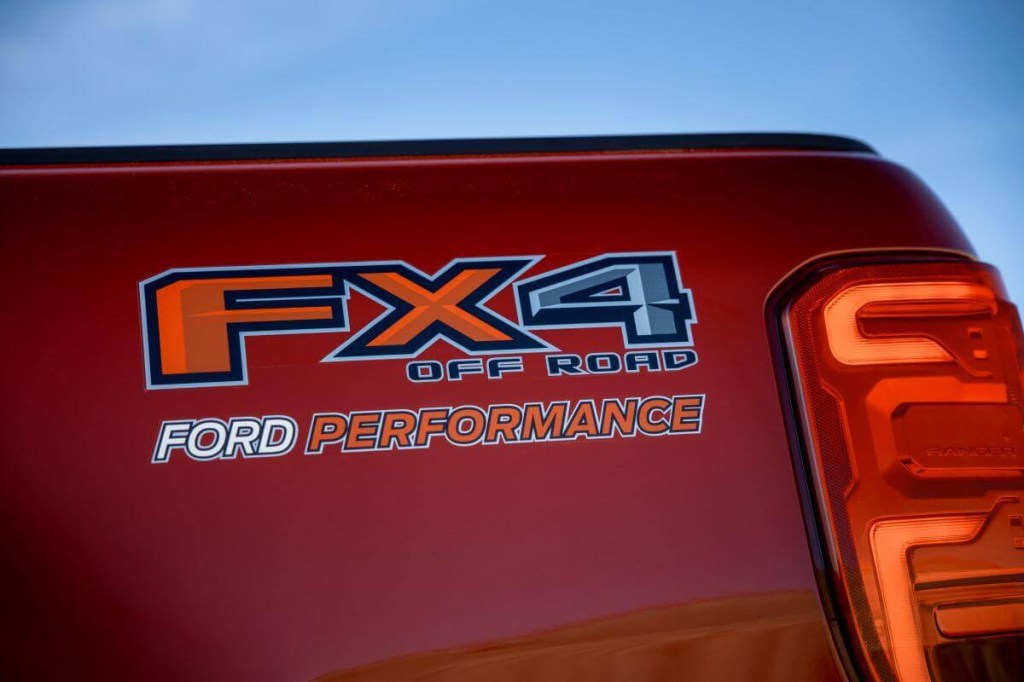
In June 2000, a group of automotive engineers from all over the world assembled in Seoul, South Korea. Among other agenda items, the World Automotive Congress hoped to once and for agree on definitions of AWD and 4WD.
This may sound like a simple distinction, but even in 2000 certain vehicles blurred the lines. Subarus and the Suzuki Viatar offered AWD with a selectable Hi/Lo transfer case in certain markets. In North America, a Hi/Lo transfer case was still limited to part-time 4WD trucks and SUVs, so automakers were unsure how to brand AWD with a transfer case when it hit the U.S.
Sankar Mohan of New Venture Gear in Michigan presented a paper to the Congress, offering some possible definitions. But in the end, the World Automotive Congress couldn’t agree on an industry-wide definition.
The real reason Americans prefer 4WD
Most cars and trucks are terrible off-road. Yeah, they may have enough ground clearance that your average passenger has to take a running jump to get into the cab. But on slightly wet trails, they’ll get stuck immediately. And that’s saying nothing of sand or snow.
The Achilles’ heel of most modern 4x4s is their open differentials. This ingenious set of gears at the center of each axle allows one tire to spin faster than the other. Without differentials, you’d scrape the tread off your outside tires while taking a sharp turn on pavement. So, thanks to the Gods of Speed for differentials. But off-road, an “open” differential will allow one wheel to spin 100 mph while the opposite one doesn’t move an inch. Good luck navigating a trail like that.
Still confused? See how a differential works in the video below:
Serious off-roaders install limited-slip or fully locking differentials in their rigs. A limited-slip upgrade locks an axle together if one of the wheels starts to spin much faster than the other. A locking differential has a switch in the cab to lock your left and right wheels together before you get into the sticky stuff. An increasing number of trucks and SUVs come from the factory with locking differentials. And there are plentiful aftermarket upgrade options.
In a traditional part-time 4WD truck or SUV, going into either 4Hi or 4Lo locks the front and back axles together. This is because there’s no expensive third differential built into the transfer case. A wheel on the left or right side can spin faster than its opposite. But, the transfer case will still send 50% of the power to the other axle. So if both wheels on either axle have traction, you’ll move forward and–hopefully–get unstuck.
In fact, AWD wasn’t possible until engineers built a cheap and simple center differential to go between the axles. This allows the engine to power all four wheels while driving quickly on pavement.
You can still get stuck relatively easily with part-time 4WD. Imagine you are on a trail, and either the left or right side is covered in a puddle, or ice, or slick rock. Even a limited slip installed in your back axle would keep you from getting stuck when a stock part-time 4WD would need a tow. But part-time 4WD is better than nothing. And it’s better than AWD with fully open differentials. This is why old-school off-roaders still swear by it.
Times have changed. Many modern AWDs have limited-slip differentials, making them superior to open-diff part-time 4WD systems. But because of early, open-diff AWDs, many American off-roaders are still biased against AWD.
Is the 2nd-Gen Ford’s F-150 Raptor AWD or 4WD? Yes!
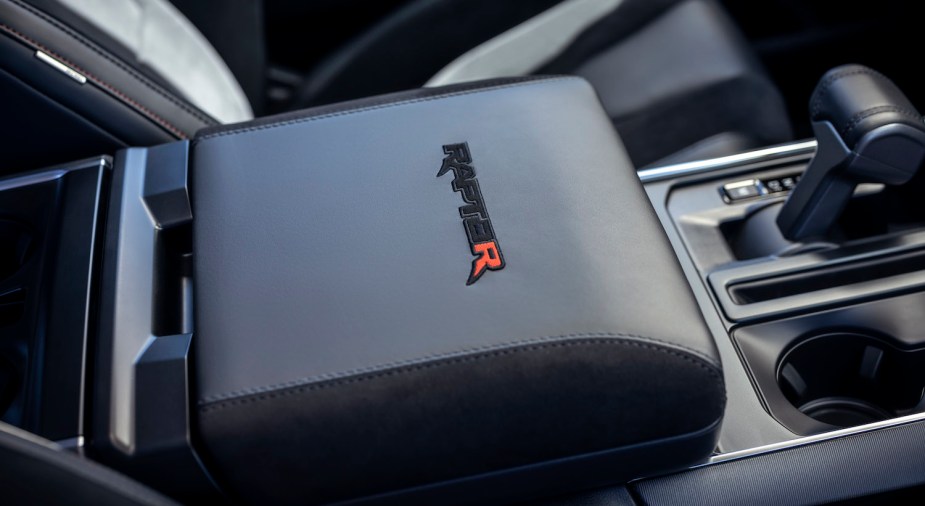
When Ford’s SVT rolled out the F-150 Raptor, it had a marketing issue. The technology to build a good AWD system with Hi/Lo gears had been around for years. But most American off-road enthusiasts weren’t interested in an AWD vehicle. So, for the second generation of the Raptor, Ford built an ingenious transfer case with both AWD and 4WD modes.
The second-generation Ford F-150 Raptor’s transfer case had an AWD mode, similar to your average Subaru. In this mode, it puts power to all four wheels but leaves the center differential open so the front and back wheels can spin at different speeds. This allows it to drive on pavement without grinding gears or skidding tires.
When you roll off road, you can select 4WD mode instead. This locks the front and rear axles together, just like a traditional 4WD truck. You can also engage the Raptor’s rear wheels with its locking rear differential. Finally, you can option the truck with a limited-slip differential up front.
Blurring the lines between full-time 4WD and AWD
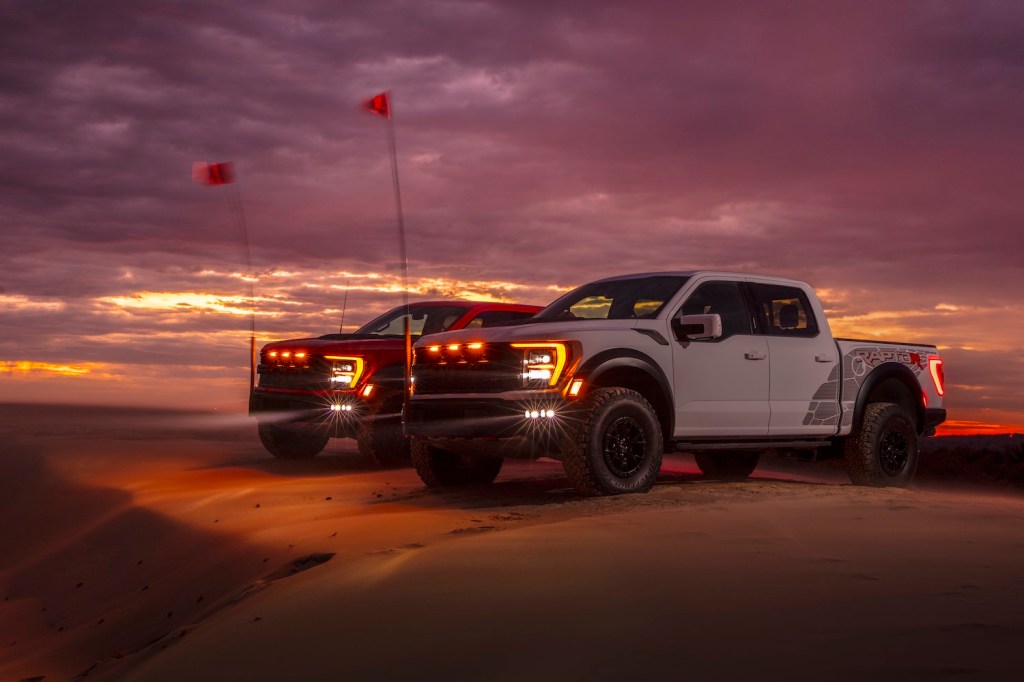
The second generation of the F-150 Raptor also had a RWD mode so you could disengage the front wheels for long drives. For the truck’s third generation, Ford dropped this RWD function. The result is a full-time 4WD Ford Raptor with both 4Hi and 4Lo settings.
This latest Raptor doesn’t have any “AWD” system. But because this “full-time 4WD” system does not appear to have an option that locks the center differential, it might be better classified as AWD with a Hi/Lo range.
The Raptor’s main competitor, the Ram 1500 TRX, has a very similar system. The flagship Ram’s full-time 4WD with a Hi/Lo range is likely based on Jeep’s optional Quadra-TRac full-time 4WD system, which features limited-slip differentials but no center locker. Again, it would be more accurately classified as a limited-slipe AWD with Hi/Lo.
It’s interesting how European off-road SUVs brand their systems. The current Mercedes G-Class, for example, advertises AWD. But this system still has the SUV’s signature three locking differentials (one for each axle, plus a center differential). In North America, Land Rover advertises its system as AWD. It is essentially an AWD system with automatic locking/limited-slip differentials. Hopefully, the next generation of American off-roaders is less close-minded about our differentials and marketers can call it like it is.
Next, read more about the fascinating history of 4×4 trucks or see the technology in the AWD/4WD second-generation Ford Raptor explained by an engineer in the video below:


